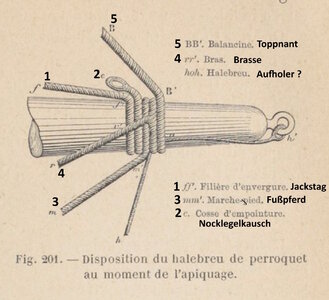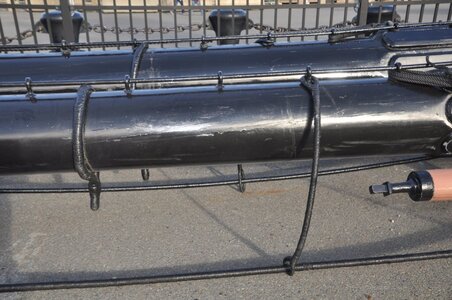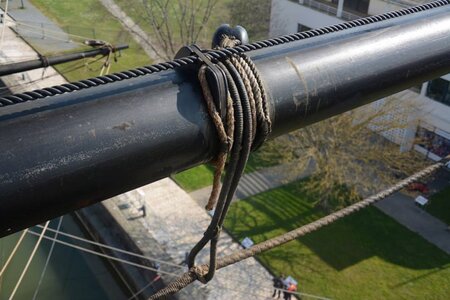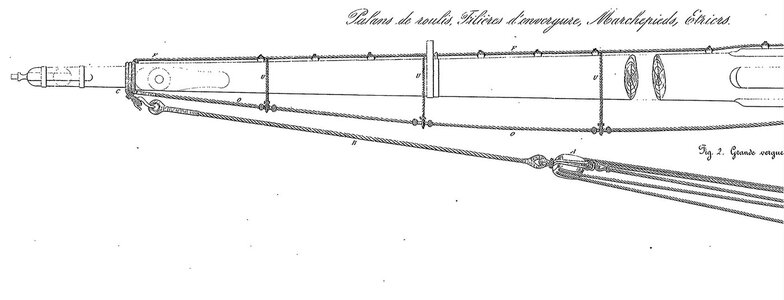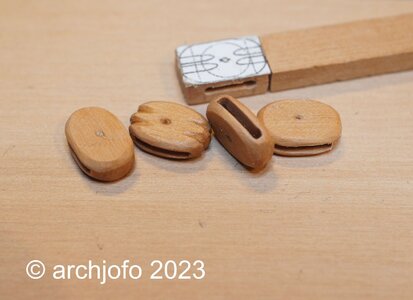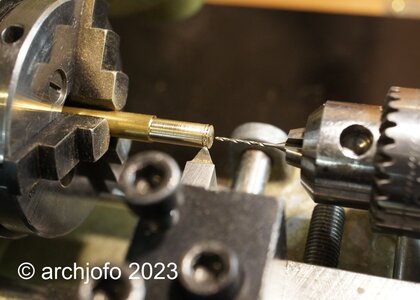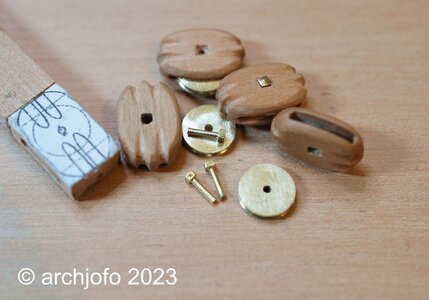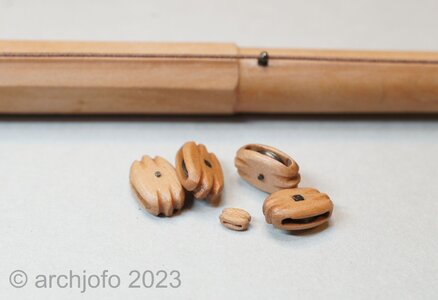- Joined
- Aug 8, 2019
- Messages
- 5,522
- Points
- 738

Nice research on the jackstays. I like the served rope on these heavy eyebolts.
About 2 things I can give you a little help.
The yard tackle was in my research always attached (Anderson) because they where also used to reef the sails.
For the measurement of the blocks I made an Excell file with the info I got in Mondfeld. The measurement of the block depents on the thickness of the used rope. I attached the file, it is in Dutch. If you need it in German or English I can translate it for you.
The sequence of ropes on the yards is not so easy to tell. Maybe the books of R.C.Anderson or James Leest can be a help. But this is not an easy subject to do, there are a lot of different kind of ropes to attach. All with their own type of blocks. (Curti shows some nice examples)
Edit: English version attach
About 2 things I can give you a little help.
The yard tackle was in my research always attached (Anderson) because they where also used to reef the sails.
For the measurement of the blocks I made an Excell file with the info I got in Mondfeld. The measurement of the block depents on the thickness of the used rope. I attached the file, it is in Dutch. If you need it in German or English I can translate it for you.
The sequence of ropes on the yards is not so easy to tell. Maybe the books of R.C.Anderson or James Leest can be a help. But this is not an easy subject to do, there are a lot of different kind of ropes to attach. All with their own type of blocks. (Curti shows some nice examples)
Edit: English version attach
Attachments
Last edited:




